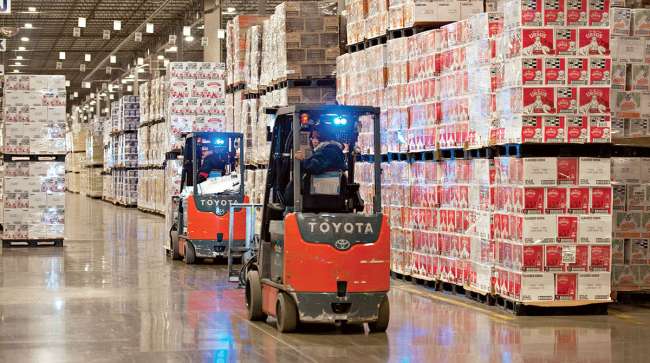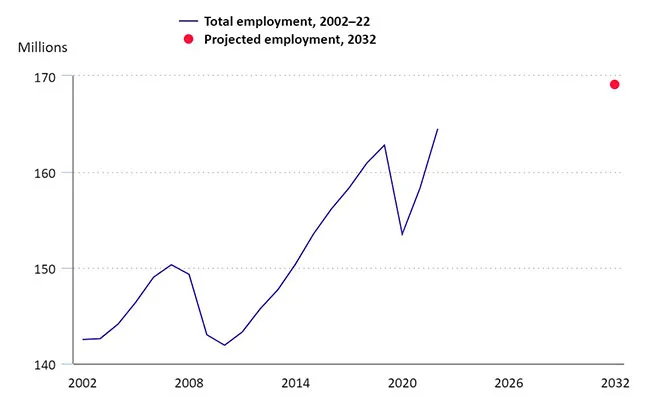Staff Reporter
BLS: Coming Decade to See Job Growth in Warehousing, Logistics

[Stay on top of transportation news: Get TTNews in your inbox.]
Transportation and warehousing will be among the fastest-growing economic sectors for the coming decade, according to a new U.S. Bureau of Labor Statistics analysis about employment projections through 2032.
“The total economy is projected to add about 4.7 million jobs during this decade, with employment reaching a level of 169.1 million in 2032. Most of the projected employment gains are concentrated in the health care and social assistance sector, and the professional, scientific, and technical services sector,” an October monthly labor review predicted.
On the flip side, retail trade and manufacturing sectors are expected to see the most job losses from 2022 to 2032 as total employment only rises 2.8% during the decade, which will grow “much slower” than the 12.9% employment increase seen from 2012–22.
The BLS forecast stated that jobs paid by wages and salaries are likely to increase 3% along with the number of self-employed workers, rising 0.6% by 2032.
“The growth of the digital economy is expected to support solid job growth across the information and transportation and warehousing sectors, both of which rank among the top five fastest-growing sectors. At the same time, the continued growth of e-commerce is expected to constrain retail trade employment, which is the sector projected to lose the most jobs over the 2022-32 decade,” BLS added.

Total employment refers to wage and salary employment and self-employment. The U.S. Bureau of Labor Statistics does not project employment for interim years 2023-31. (Source: U.S. Bureau of Labor Statistics)
The agency expects the continued growth of e-commerce “to fuel solid job growth among industries and occupations tied to the field of logistics,” but the growing popularity of online shopping will translate into few retail-related jobs.
An aging population and chronic conditions are tipped to push the health care and social assistance sectors to among the top largest employers.
“The computer and mathematical occupational group is projected to experience the second-fastest job growth of all 22 groups,” BLS stated.
Volvo's Keith Brandis and Eric Bond take an in-depth look at how the company's SuperTruck 2 improves freight efficiency. Tune in above or by going to RoadSigns.ttnews.com.
Rising demand for information technology products and services will drive strong growth in the professional, scientific and technical services sectors, expected to account for 21% of all new jobs.
Except for new jobs created by green energy projects, electric vehicle battery manufacturing and semiconductor production, jobs will be lost in both the utilities and manufacturing sectors.
“Employment in the manufacturing sector is likewise expected to decline, albeit slightly, because of the continued adoption of automation technologies. However, some industries, such as those engaged in battery and semiconductor production, are expected to add jobs between 2022 and 2032,” BLS forecast. “Although the utilities sector is projected to see employment decline overall, the four fastest-growing industries are all utilities industries. This divergence reflects the energy transition, as employment in fossil-fuel-related utilities is expected to decline whereas green energy is projected to experience fast growth.”
Legislation enacted to move the U.S. from fossil fuel to renewable energy generation is mainly responsible for the creation of green energy jobs, according to BLS.
Want more news? Listen to today's daily briefing below or go here for more info:





